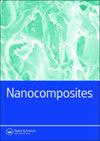Unsteady 3D heat transport in hybrid nanofluid containing brick shaped ceria and zinc-oxide nanocomposites with heat source/sink
IF 4.2
3区 材料科学
Q2 MATERIALS SCIENCE, COMPOSITES
引用次数: 19
Abstract
Abstract In the field of nano-composites, hybrid nano-fluids have noteworthy applications in aerospace, energy materials, thermal sensors, antifouling, etc. because of their ability to produce higher thermal conductivity than conventional nanofluids. Different combinations of nanocomposites have been found in the literature to develop the suitable hybrid-mixture, but no study has been found yet about the combined influence of ceria and zinc-oxide nanocomposites in the host liquid. In this article, unsteady 3 D transport of water driven hybrid nano-fluid with the consequences of brick shaped nanocomposites (ceria; and zinc oxide; ) has deliberated with the thermal link of heat source/sink. Variable thermal conditions have been supplied at the surface with the effect of a magnetic environment. Similarity relations have been used to articulate the transport equations into solvable forms and then solved numerically via Keller-Box method. Nusselt number and skin-friction coefficients have also plotted with the wide ranges of involved parameters. Thermal setup has also briefly been discussed with the non-uniformity of surface temperature. Rate of heat transfer has significantly improved with the amounts of ceria (1 wt% to 10 wt%) and zinc-oxide (1 wt% to 10 wt%) nanocomposites. The Nusselt number is reported in the range of 4.0 to 4.8 with the increasing amount of from −0.6 to −0.2, whereas it is reported in the range of 3.1 to 3.9 with the varying amount of from 0.2 to 0.6. Rate of heat transfer is observed higher for zinc-oxide nanoparticles as compared to ceria nanoparticles. Graphical Abstract含砖状氧化锆/氧化锌纳米复合材料纳米流体的非定常三维热输运
在纳米复合材料领域,混合纳米流体由于具有比常规纳米流体更高的导热性,在航空航天、能源材料、热传感器、防污等领域有着值得关注的应用。文献中已经发现了不同的纳米复合材料组合来开发合适的混合混合物,但尚未发现在宿主液体中二氧化锆和氧化锌纳米复合材料的联合影响。在本文中,水驱动混合纳米流体的非定常三维输运与砖状纳米复合材料(铈;和氧化锌;)对热源/散热器的热环节进行了探讨。在磁环境的作用下,在表面提供了可变的热条件。利用相似关系将输运方程表达为可解形式,然后通过Keller-Box方法进行数值求解。努塞尔数和表面摩擦系数也绘制了大范围的相关参数。热设置也简要地讨论了表面温度的不均匀性。随着氧化铈(1 wt% ~ 10 wt%)和氧化锌(1 wt% ~ 10 wt%)纳米复合材料的加入,传热速率显著提高。Nusselt数的范围为4.0 ~ 4.8,增加量为−0.6 ~−0.2,而Nusselt数的范围为3.1 ~ 3.9,增加量为0.2 ~ 0.6。与氧化锆纳米颗粒相比,氧化锌纳米颗粒的传热速率更高。图形抽象
本文章由计算机程序翻译,如有差异,请以英文原文为准。
求助全文
约1分钟内获得全文
求助全文

 求助内容:
求助内容: 应助结果提醒方式:
应助结果提醒方式:


